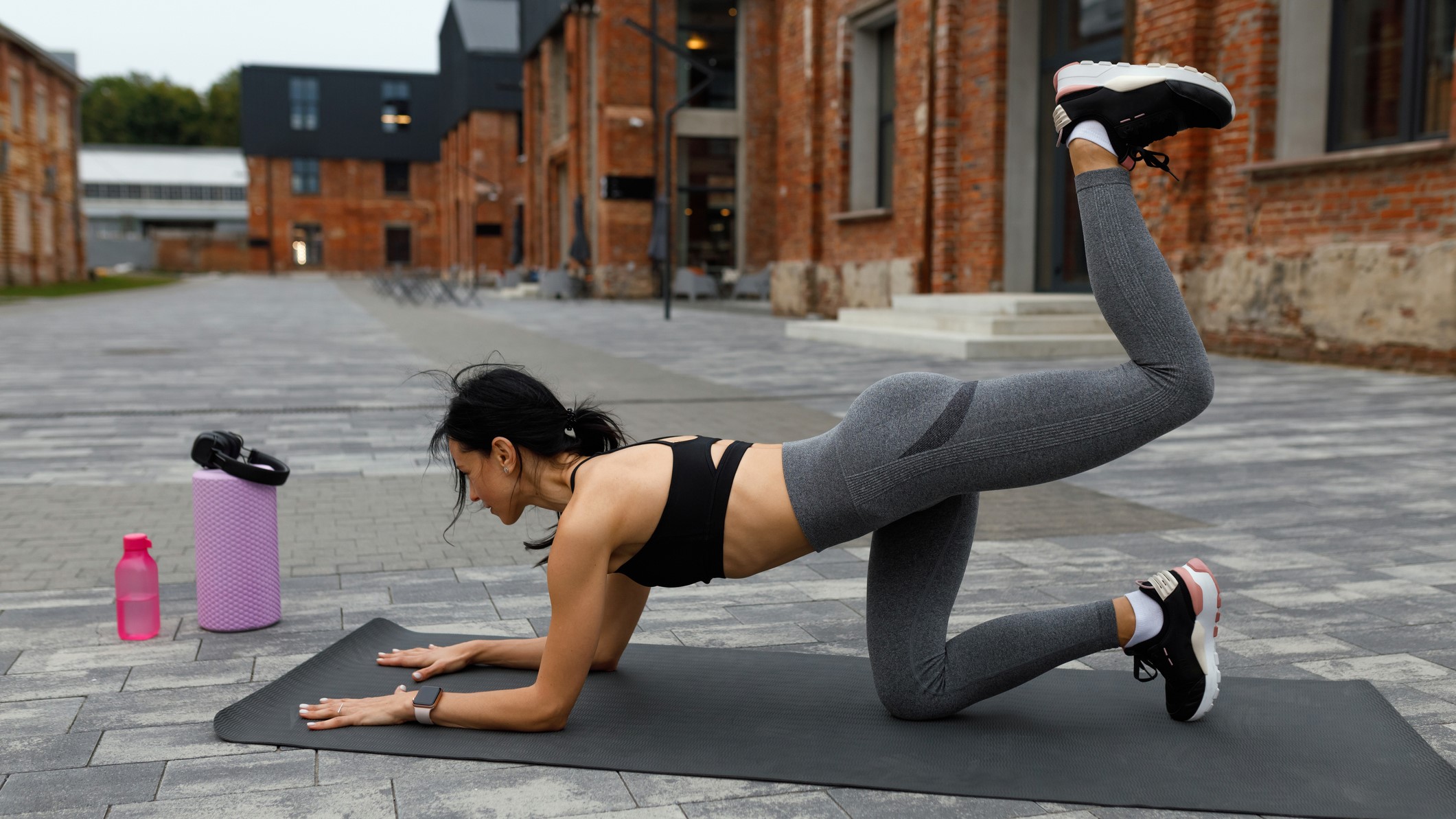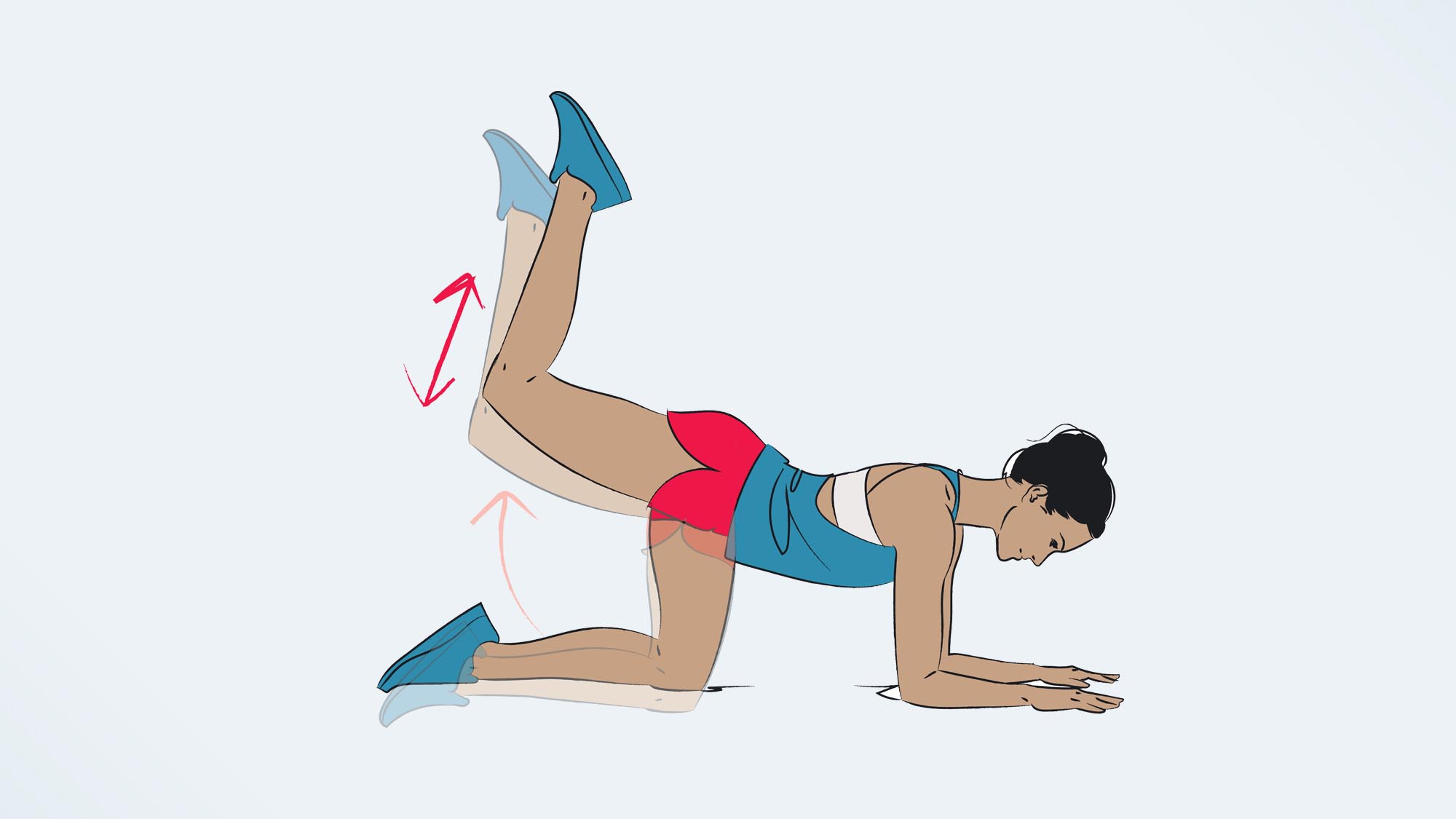I did 100 donkey kicks a day for a week — here’s the results
Are donkey kicks the secret to stronger glutes?

When it comes to the best exercises to strengthen your glutes, the humble donkey kick is one of the most simple bodyweight exercises you can try. Named after the animal’s notorious kick, this exercise can easily be modified to make it more difficult and is an excellent one for isolating the biggest glute muscle — the gluteus maximus. To find out more, I took a deep dive into the exercise, adding it to my daily routine for a week. Read on to find out what happened.
Before diving into the donkey kick, and how to do it, it’s important to take a second to point out that 100 reps of anything is a lot, and what works for me might not be right for you and your body. If you’re new to exercise, or you’re returning to exercise following an injury, it’s a good idea to check your form with a personal trainer to ensure your form is correct.
It’s also worth noting that it’s definitely not recommended to work on your legs every single day — it’s important to give your body time to recover between strength sessions. For this week, I skipped my other leg workouts to ensure I wasn’t overtraining.
How to do a donkey kick

Let’s start by taking a look at how to do a donkey kick with the correct form. Below, we’ll go through the bodyweight variation first:
- Start on all fours, with your knees stacked beneath your hips, and your hands beneath your shoulders
- Make sure your back is flat — think about engaging your core, to prevent any arching in your lower back
- Engaging your core, keep a 90-degree bend in your knee, and lift your foot up toward the ceiling. Make sure you don’t lift your leg too high — your lower back should not start to arch, and your hips shouldn’t twist.
- Squeeze your glute at the top, before returning to your starting position, but don’t drop your knee back down to the floor.
- That’s one rep. Complete all your reps on one leg before swapping to the other side.
To make the exercise more challenging, you can add weights, either by holding a small dumbbell in the bend of your knee, or by using a set of the best ankle weights.
What are the benefits of donkey kicks?
As mentioned above, donkey kicks target the largest of the three muscles that make up the glutes — the glutes maximus. The gluteus maximus is the largest muscle in the body, and doing exercises like this that work on isolating it is especially important. We use the gluteus maximus for simple activities like walking up stairs, but it also plays a pivotal role in most sports that involve running, as it generates a large amount of force. If you want to PR at your next marathon, work on your glute strength.
Donkey kicks also work your core, as you have to keep it engaged during the move, and your shoulders. It’s a good one to add to your routine if you spend a lot of time sitting. On that note, here are the best exercises to do if you sit down all day.
Get instant access to breaking news, the hottest reviews, great deals and helpful tips.
I did 100 weighted donkey kicks a day for a week — here’s what happened
Day one
On the first day of this challenge, I opted for regular, bodyweight donkey kicks — don’t run before you can walk, right? I opted for two sets of 25 reps on each leg, moving slowly and with control to ensure I wasn’t rocking my hips from side to side as I lifted my leg.
One hundred reps later, I felt a slight twinge in my glutes, but nothing too extreme. I did notice when I started my run a few minutes later, I was able to better engage my glutes as I moved — like a lot of runners, I find I have lazy glutes when I’m running.
Day two
On Day Two, I decided to up the ante and grabbed a 4-pound dumbbell, putting this behind my knee to increase the intensity of the move. The addition of even a light dumbbell made the exercise a lot harder, and I found I had to slow the move down to really focus on not letting my hips twist as I lifted my leg.
I found it tricky to keep the dumbbell in place, as you have to squeeze it with your legs to stop it from tumbling to the ground. This forced me to engage my leg muscles more, as well as squeezing my glutes and abs.
Days three and four
On Days Three and Four, I continued with the weighted donkey kicks, focusing on moving slowly and with control as I lifted and lowered my legs with the dumbbell.
It’s important to keep your back flat when practicing this move to avoid putting pressure on your lower back. I suffer from sciatica, so this was especially important, and I asked a PT in my gym to check my form. She told me to think about having a glass of water balanced on my lower back as I moved.
Day five
On Day Five, I did my donkey kicks at home before heading out for my long run — I’m currently training for the London Marathon, so I had 16 miles on my plan. I decided to return to bodyweight donkey kicks, using them as part of my pre-run warm-up, instead of as a strength routine.
Days six and seven
At last, the end of my week-long challenge was in sight. As with all of these fitness challenges, I was well and truly sick of donkey kicks by Day Six, but in the name of good journalism, I powered on, this time strapping a pair of the best ankle weights to my legs, instead of holding dumbbells behind my knees. I found it easier to focus on my form using the ankle weights, as I wasn’t as worried about the dumbbell slipping the entire time.
Verdict
The results of 700 donkey kicks? Sadly the human body doesn’t build a serious amount of muscle in a week, so all those glute-strengthing kicks didn’t lead to any physical changes in my legs. That said, I did find it really helpful to use the donkey kicks before heading out for a run to "switch on" my glutes. I’ll definitely be using them in my pre-run warm-up in the future — just not hundreds of them!
More from Tom's Guide
- I did 100 curtsy lunges a day for a week — here are the results
- All it takes is 7 minutes and 1 resistance band to build strength
- Forget squats — this home workout takes 10 minutes to sculpt your glutes

Jane McGuire is Tom's Guide's Fitness editor, which means she looks after everything fitness related - from running gear to yoga mats. An avid runner, Jane has tested and reviewed fitness products for the past five years, so knows what to look for when finding a good running watch or a pair of shorts with pockets big enough for your smartphone. When she's not pounding the pavements, you'll find Jane striding round the Surrey Hills, taking far too many photos of her puppy.
